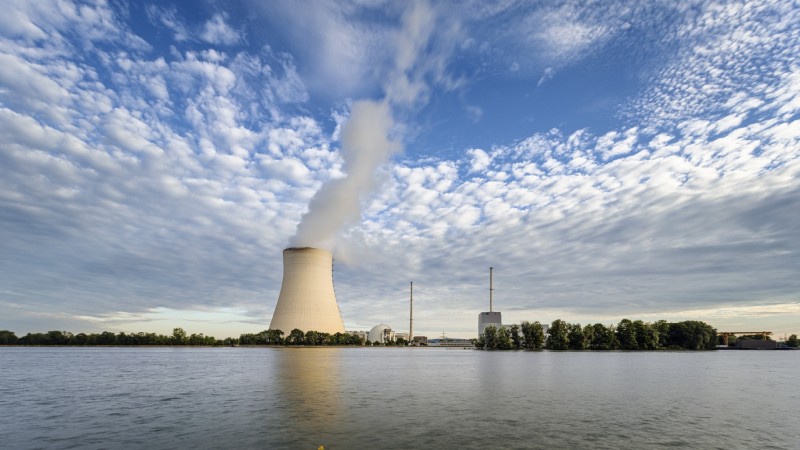
RFK Jr. is right to focus on the corruption of the food system and government regulatory bodies
Last week, to mark Robert F. Kennedy Jr.’s historic endorsement of Donald Trump, I wrote a two-part series on ultra-processed food and endocrine disruptors, which RFK Jr. has identified as among the principal causes of America’s unprecedented health crisis.
Kennedy and Trump have promised to Make America Healthy Again, with a wide-ranging investigation into the underlying causes of chronic disease.
A fundamental part of that plan involves addressing significant failures of government that have allowed corporate food manufacturers to fill their products with cheap rubbish ingredients like soybean oil and high-fructose corn syrup, and an ever-expanding list of additives whose safety is anyone’s guess; and allowed America’s food, water and air to become contaminated with toxic chemicals that have been linked to diabetes and obesity, cancer, heart disease, behavioural conditions like autism and neurological diseases like Parkinson’s and Alzheimer’s.
HUGE STUDY LINKS PROCESSED FOODS TO DEPRESSION.
Yet more evidence that processed food is about the worst thing you can eat if you want good physical and mental health. 👇 pic.twitter.com/Ty0MZvIHrI
— RAW EGG NATIONALIST (@Babygravy9) May 27, 2024
Kennedy’s emphasis on structural factors and corruption is absolutely correct. Organizations like the FDA, and the systems they have in place to regulate the food supply, medicines and industry, just aren’t fit for purpose. They favour corporations at the expense of the American people. And is it any wonder, since regulators glide straight into corporate jobs—often with the companies whose products they’ve approved?
For example, an investigation by Science magazine in 2018 reported that “11 of 16 FDA medical examiners who worked on 28 drug approvals and then left the agency for new jobs are now employed by or consult for the companies they recently regulated.” Science concluded, weakly, that “This can create at least the appearance [my emphasis] of conflicts of interest.”
In last week’s piece on ultra-processed food, I looked in detail at the FDA’s “Generally Recognized as Safe” (GRAS) system for food additives, which I’ve suggested really ought to be renamed “Generally Recognized as Insane.”
Under the guise of regulating novel additives to the American food supply, we’ve ended up in a position where there are as many as 10,000 food additives, compared to around 2,000 in the EU.
I say “as many as,” because the simple fact is, we don’t know how many there are. And what’s more, we have to trust the corporations that manufacture them and add them to their products, that they’re safe.
The GRAS system was first introduced in 1958, when the Food Additive Amendments were passed, to require that all non-standard food additives—ingredients that aren’t typically found in a normal home kitchen—should be tested adequately for safety in humans. At first, manufacturers had to submit new ingredients to the FDA for testing if they wanted to use them commercially in food, but as the demand for approvals grew, the FDA simply couldn’t keep up. So manufacturers just started adding new ingredients to their foods without telling the FDA. Instead of reining manufacturers in and reasserting control, the FDA regularised this system in 2016, retrospectively and prospectively.
In 2024, a company can produce a new food additive, decide it’s safe and then bring it to market without any scrutiny from the FDA at all. Like I say, this is insane.
A boy’s blood testosterone levels at just three months old will predict his semen quality when he’s 18-20. This is why estrogenic endocrine disruptors are so pernicious: because exposure happens at all stages of physical development and it can have lifelong effects. pic.twitter.com/Xy8yCQ0ucd
— RAW EGG NATIONALIST (@Babygravy9) November 26, 2023
The insanity extends well beyond food additives. I was reminded of this a few days ago, when I read about the FDA’s approach to plastic food-contact materials. On top of regulating what goes into food, the FDA is also in charge of regulating food packaging too.
As with the GRAS system, approvals are voluntary and it seems manufacturers of food packaging can simply get away with what they want. Companies can seek guidance from the FDA about their manufacturing process, but they don’t have to. The FDA doesn’t even monitor which companies manufacturers sell their products to.
This is true with recycled plastics, which more and more food makers are using. Coca Cola now uses 100% recycled PET bottles, for example, and Annie’s cereal boxes contain a liner that’s made with 35% recycled plastic film.
Recycled plastic presents unique risks to consumers that the FDA seems totally incapable, and perhaps even unwilling, to address.
I’ve said elsewhere, in a detailed Twitter thread on the subject, that if there’s one thing that’s worse than plastics, it’s recycled plastics.
Why? Well, for starters, we know that recycled plastics shed considerably more microplastics than “virgin” plastics. Recycled plastics are older and more brittle as a result of the recycling process, which usually subjects them to heat, mechanical stress and the action of various chemicals. That means a recycled plastic water bottle or food container will release even more microplastics into the contents than a freshly manufactured one. (The recycling process itself also releases massive quantities of microplastics into the environment.)
But it gets worse. Recycled plastics are also hugely contaminated with chemicals you wouldn’t normally find in virgin plastics. It’s easy to understand how this would be the case when you understand how plastics are processed for recycling. Even when plastics are sorted by type of plastic—for example, PET vs PVC—you still get plastics being mixed from a wide variety of different applications. You could have plastics used as food-contact materials being processed with plastics that have been used to store agrochemicals like glyphosate, medications or even human and animal waste products. All of these chemicals could end up, via recycled plastics, in your food and drink.
A recent study illustrated the extent of this contamination in detail. Researchers tested plastic pellets taken from 13 different recycling plants around the world. They found 491 readily identifiable organic compounds in the pellets, and tentatively identified a further 170. The chemicals spanned a whole variety of different classes, from pesticides and biocides, to pharmaceuticals, industrial chemicals, surfactants, fragrances, stimulants and even human metabolites (i.e. end-products of human digestion).
By far and away, the most common class of chemical found in the recycled plastic was pesticides and biocides—162 different compounds were discovered—followed by pharmaceuticals—89 compounds—and industrial chemicals—65 compounds.
Once again, it turns out the FDA’s regulations just aren’t fit for purpose. The current rules on recycled plastics in food-contact materials may benefit corporations pursuing a better bottom line, and also help them to “greenwash” their products by claiming they use “environmentally friendly” materials, but the truth is, they’re likely to increase the risk to consumers considerably. Once again, it’s consumers—ordinary Americans—who come last.
Plastics and plastic chemicals are a clear and present danger to our health today, but so are the attitudes and systems that allowed us to reach this point, where plastic food-contact materials are probably become less rather than more safe. Until we change those attitudes and systems, we can ban as many chemicals and additives as we want, but nothing will really change.
We need to start from the top and work our way down, right to the bottom.
Top Economist Martin Armstrong’s Computer Warns 2024 Will Probably Be Our Last Election




